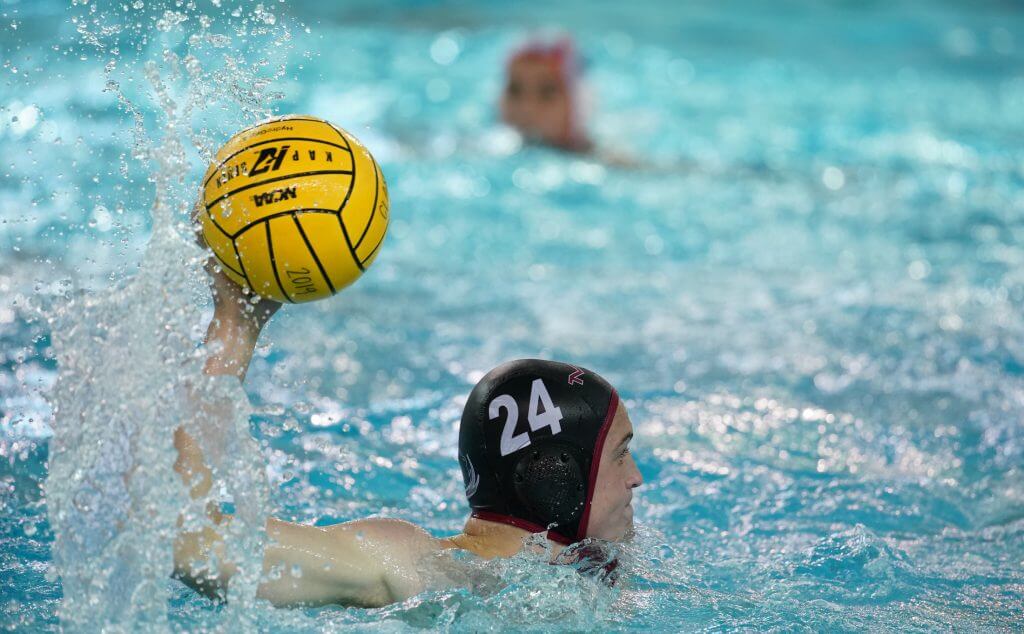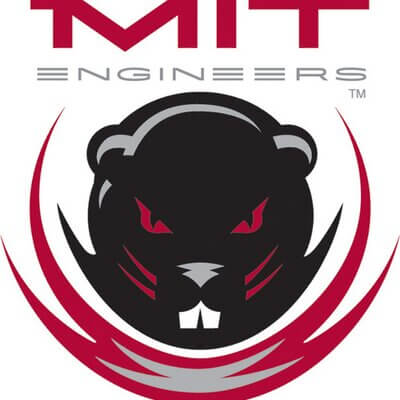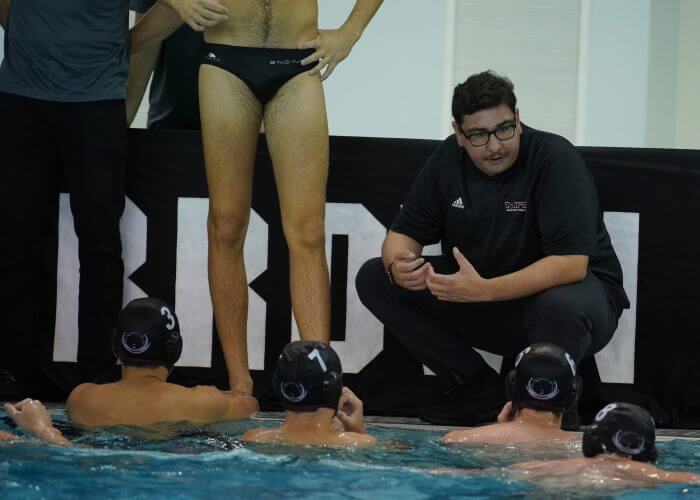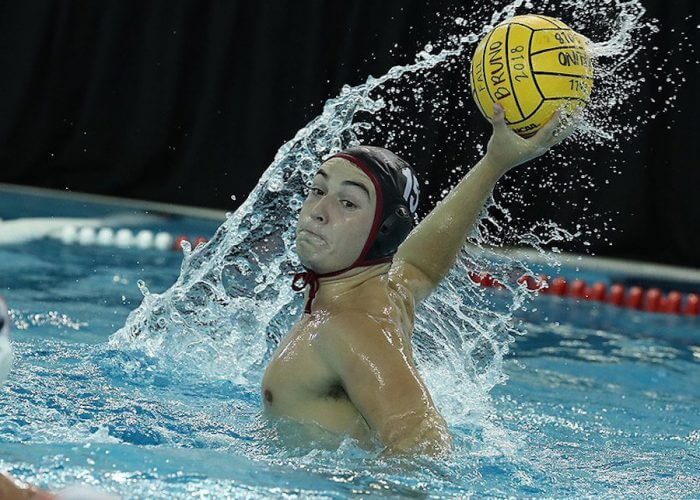Ringheim and Koetters of MIT Talk Engineer Water Polo

BROOKLYN HEIGHTS, NY. This Saturday marked the start of conference play for all six members of the Northeast Water Polo Conference (NWPC). A key feature in the opening of conference play are matches at the St. Francis Aquatics Center, one of the more distinct venues in NCAA men’s and women’s polo, where Brown, Harvard and MIT played this weekend
 Orchestrating one of the best starts in MIT program history is Austin Ringheim. At 7-3, the Engineers—1-2 in NWPC play—are halfway to a winning record for the first time since the 2007 team went 16-11 under Adam Foley. Facing the Terriers in their home tank is always a challenge, one that has proven insurmountable to MIT athletes and coaches in almost a half century of competition.
Orchestrating one of the best starts in MIT program history is Austin Ringheim. At 7-3, the Engineers—1-2 in NWPC play—are halfway to a winning record for the first time since the 2007 team went 16-11 under Adam Foley. Facing the Terriers in their home tank is always a challenge, one that has proven insurmountable to MIT athletes and coaches in almost a half century of competition.
[On The Record with Austin Ringheim, MIT Water Polo New Head Coach]
This Saturday was more of the same, as the home team took a 17-9 decision over the visiting Engineers. After the match, Ringheim, and Sawyer Koetters, his star freshman, spoke about the Terriers’ pool configuration, a successful start to their respective MIT careers, and what might be expected from the Engineers in the 2019 season.
***
AUSTIN RINGHEIM:
– Welcome to the Terriers’ Den! You probably haven’t been in a situation like this playing against St. Francis Brooklyn.
No, this is brand new! It’s a new experience and definitely something I’ve learn to develop. It’s hard to hear myself think [in here], let alone interact with the guys and get instructions and direction out there.
It’s definitely unique.
– This is part of what makes Northeastern water polo particular. you have tenacious programs like St. Francis and Iona whose shallow / deep pools are a factor in how they compete.
They do a great job with their resources and it’s awesome to see them be successful with what’s presented to them.
– You’re making the best of what you’ve got; you had two guys injured today but MIT has gotten off to a fast start.

MIT’s Austin Ringheim. Photo Courtesy: DSPics.com and MIT Athletics
It’s been a great start. Yes, we have two guys injured, but we definitely have the guys on deck and in the water to be successful against anybody we get to compete against—and that’s our main goal as a program. If we have six seniors or six freshmen we want to compete and make sure we put out our best effort in the pool in every single game we can.
– I’ve asked this before but in high-performing institutions like Brown, Cal, Harvard, MIT, Princeton, Stanford and others, academics come first—so water polo has to wrap around curricular requirements.
We already have a built-in schedule between academic and athletic time that allows our athletes to avoid being between a rock and a hard spot—between choosing their academic and athletic success. We get to that balance of both—it’s about navigating that path to what being a scholar athlete and have success in both in academics as well as the athletic part of what we’re trying to do.
– Where you’re coming from, it’s all about winning in the water; how have those trade-offs worked out?
We have a time-frame of a 5 – 7 p.m. window for practice, which allows our athletes to take any course that they want to and study whatever they choose—and [to decide] where they see themselves in the long term, which has been a great opportunity.
That [time slot has] been put in by the school, which is great because I think it allows the guys to have a natural balance built-in, rather than me get over-excited and take up more of their time when they need to be focused on the academic side of things and professional development. Which is ultimately why they come to MIT. They come for the opportunities presented to them as students—and what’s presented to them as student athletes is definitely the cherry on top.
That’s the mentality I go in with—[that] and to keep that balance and long-term success.
***
SAWYER KOETTERS:
– You were highly recruited out of Santa Monica High School in California—including being lured to Navy by Head Coach Luis Nicolao. How did you end up at MIT?
I was evaluating different options—I’m doing ROTC at MIT; I didn’t get accepted to that program until a lot later than I expected to. The Naval Academy’s an awesome place—they’re having a really good season so far, doing better than they have in previous years. It’s good to see that Louie’s stepping in and doing really cool things.
It’s nothing that I didn’t want to go there. MIT’s an awesome place; the Naval Academy’s an awesome place. I feel like I fit in really well at MIT and I’m really happy to be here. No regrets.
– As a freshman this season, you’re new to all this—including the indoor pool conditions prevalent in the Northeast.
Interestingly enough, my high school’s one of the only one that has an indoor pool—I went to Santa Monica High School and you wouldn’t think that Santa Monica would have an indoor pool, but we did.
It was a huge pool compared to a pool like this, which is shallow / deep. We had a very nice, big facility. It’s definitely a lot different coming here.
– How has your adjustment been to one of the world’s most rigorous academic curricula?

Miller Gescheke, MIT’s leading scorer. Photo Courtesy: MIT Athletics
It’s definitely hard, but everyone on the team has been through it and everyone around me is going through exactly the same thing. So, it’s not like I’m alone; everybody helps out.
I’m the only freshman on the team so everyone’s totally willing to help me out to get done what I need to.
– Academic success in the name of the game at MIT—and now you look to distinguish yourself in the water, too.
When you’re in the classroom, it’s 100% focus on that. Once practice starts, school’s over, the day is done, it’s time to grind in the pool. When you step on the pool deck, you’re not thinking about school.
I’ll do my homework on the bus ride but once we get changed into our Speedos, schools over. It’s all about [water polo].
We’re practically a Division I program in terms of our schedule, so it’s not like we’re going to be skipping games to do our homework.
– MIT is not a DI program—and has a very good chance of playing for first-ever DIII national championship in your first year in Cambridge.
Everybody always says: Just focus on the games ahead. But it’s not like you don’t have a little circle on your calendar a few months from now.
[USA Water Polo Division III National Championship Set to Begin in 2019-20]
Looking at it, it’s a little motivation. [And] it’s awesome to be able and come in here in my first year to have an opportunity to play for a DIII national championship.
Even though every day we’re trying to be the best we can, there is a goal. It’s not just like we’re practicing to practice: we’re here to win championships.
We do have those dates circled.



